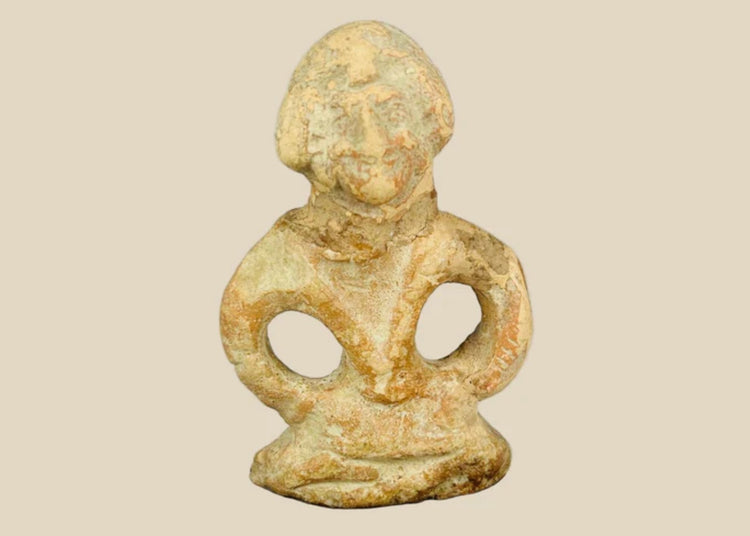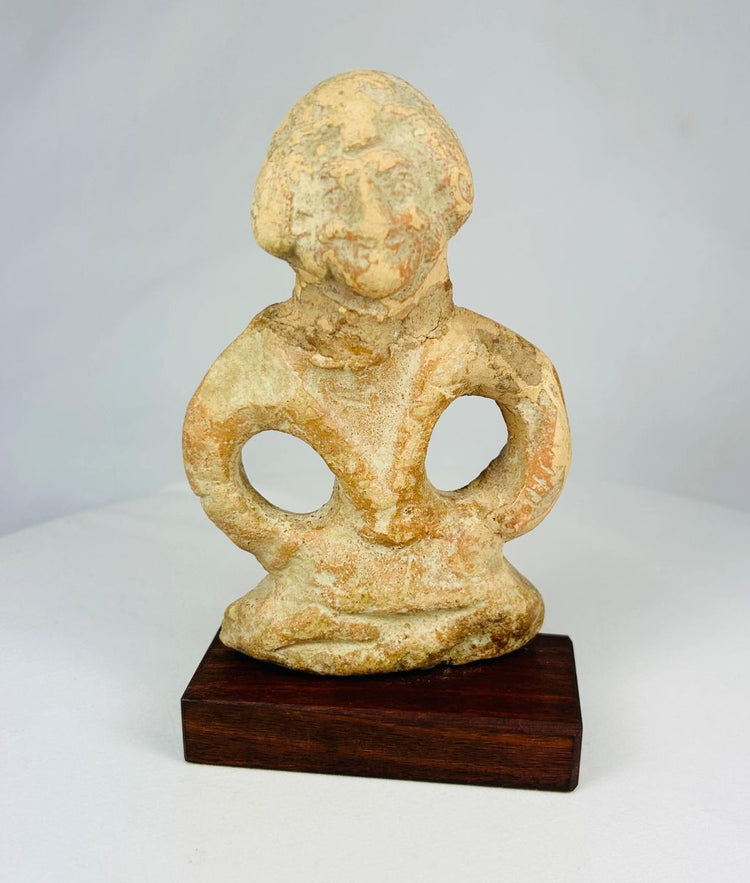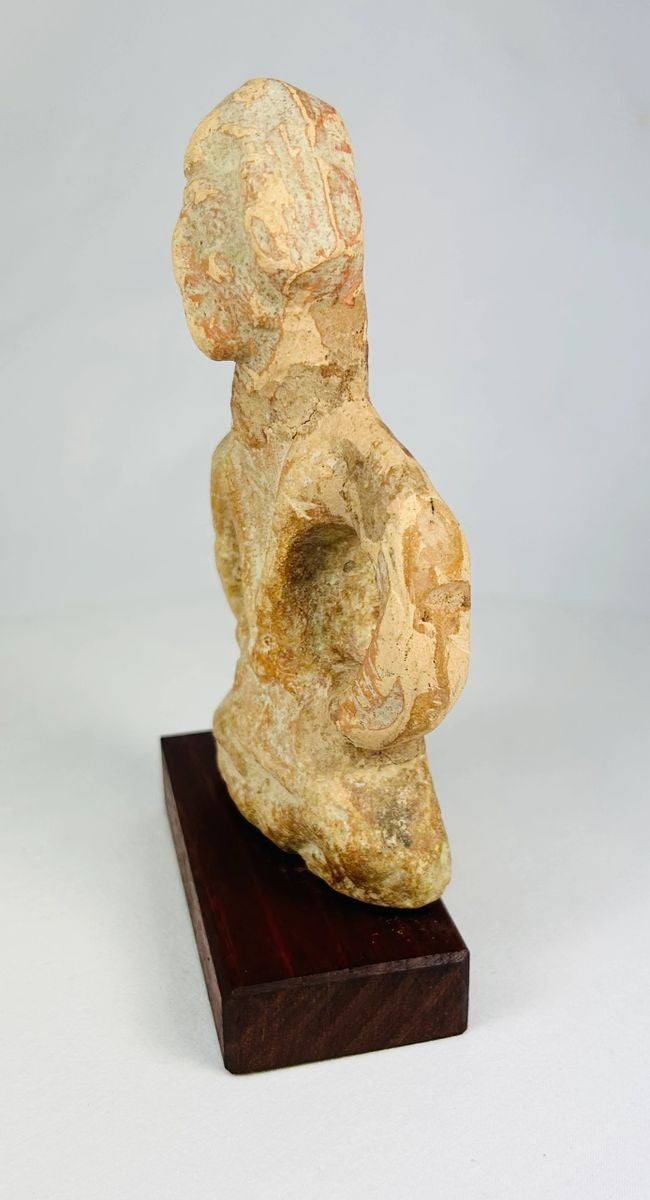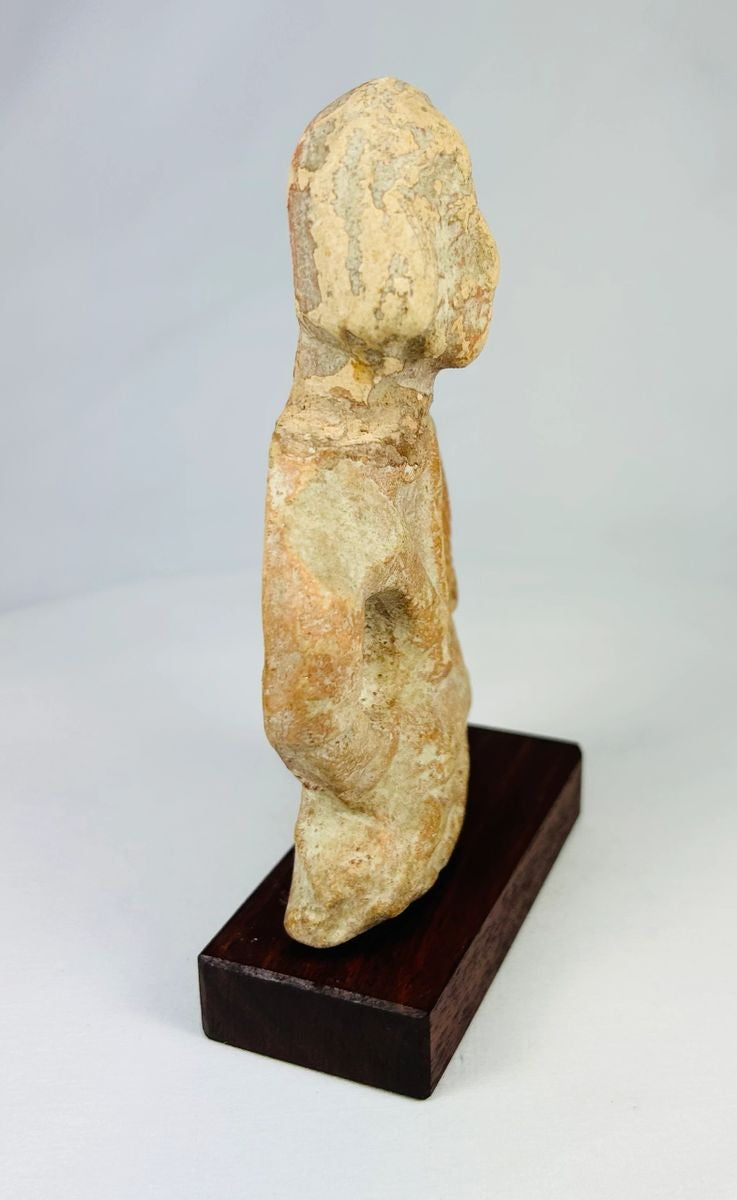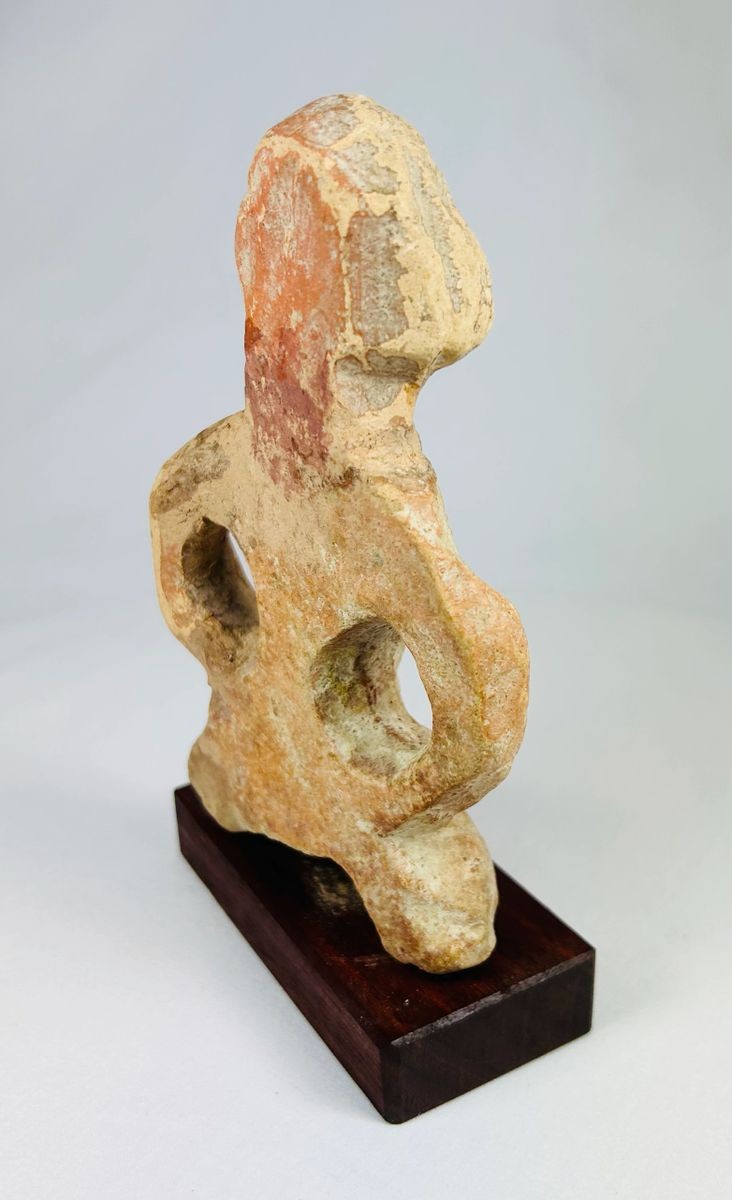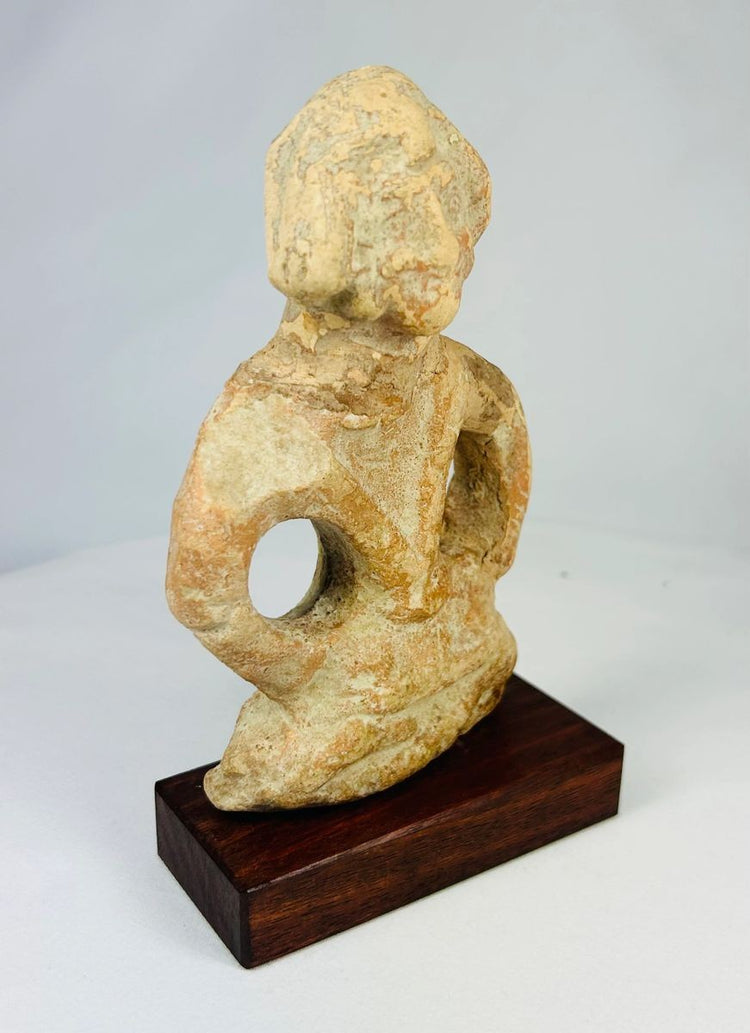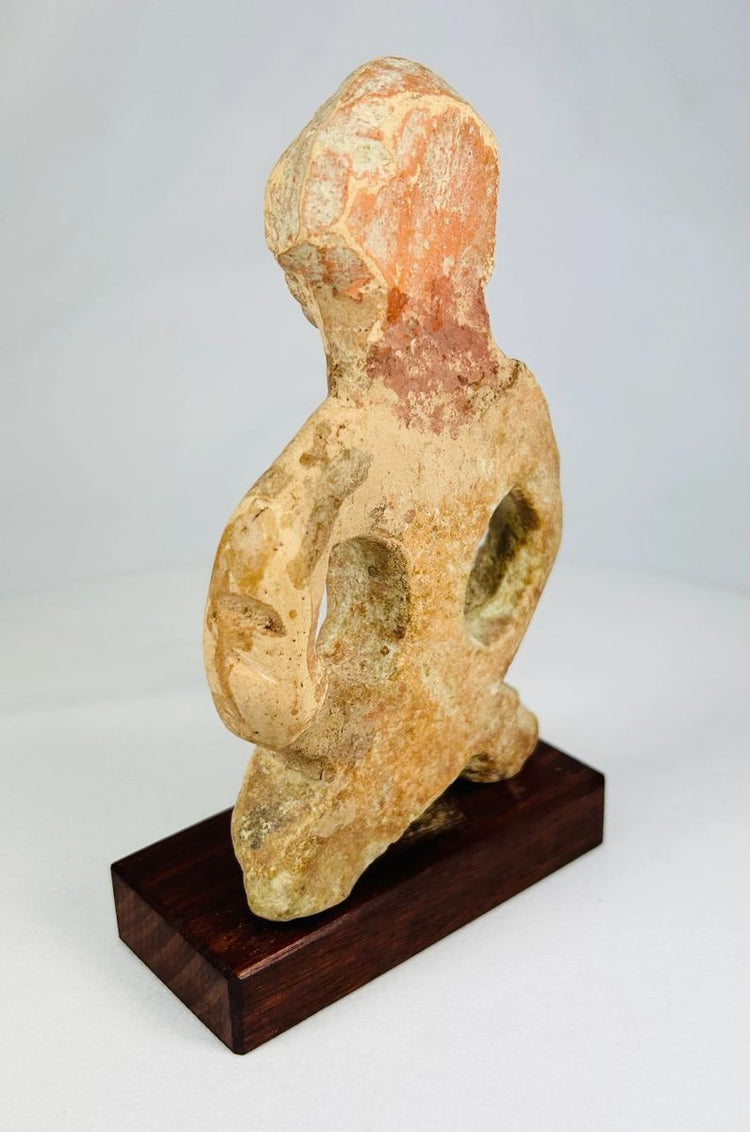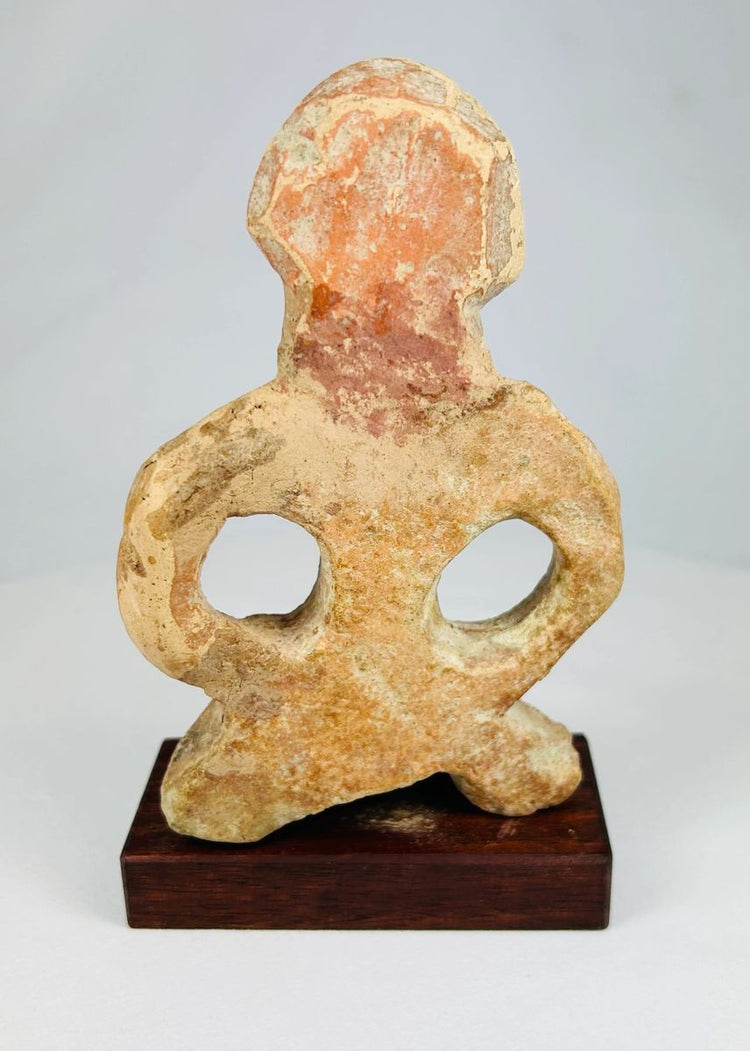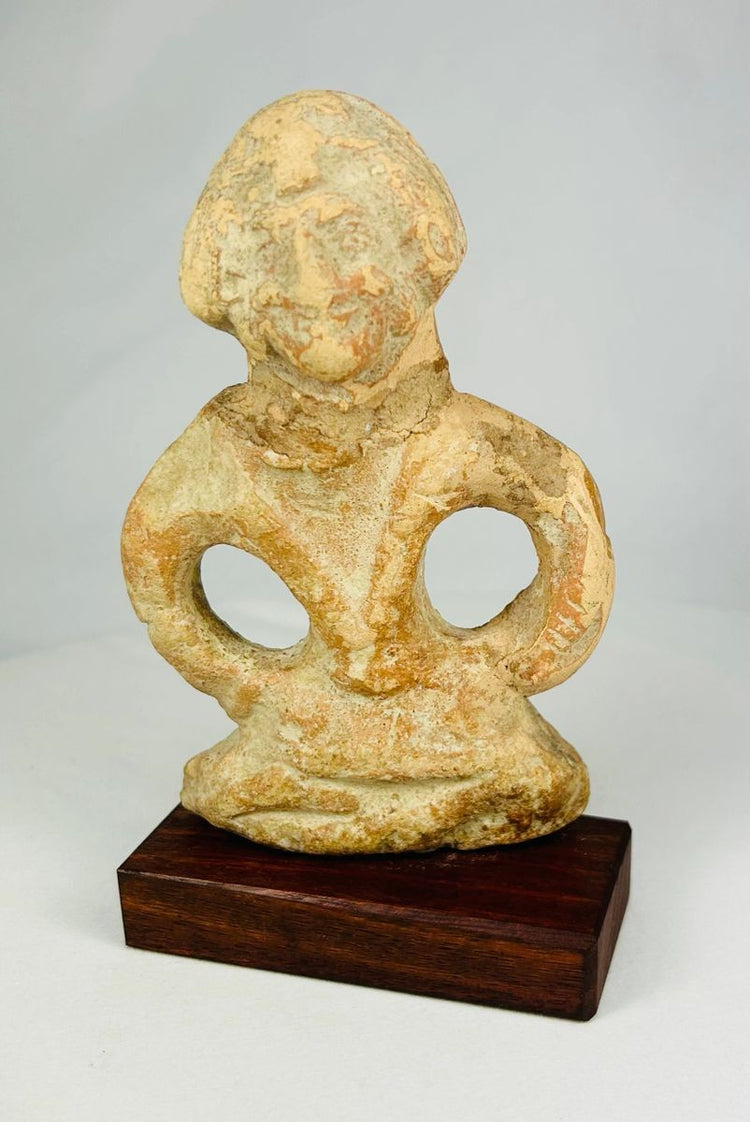Ancient Mauryan | Terracotta Sculpture | Circa 3rd Century BCE
Description
More
Less
Historical Context & Origin
Region: Ancient India
Material: Terracotta
Period: Mauryan Empire, circa 322–185 BCE
Description
This ancient terracotta figurine, dating to the Mauryan period, represents the artistic refinement and ceremonial traditions of one of India’s most significant dynasties. Likely created during the reign of Chandragupta Maurya or Ashoka the Great, the sculpture reflects the cultural emphasis on both spiritual and domestic life. Figurines of this type were commonly produced for ritual purposes, domestic adornment, or as symbolic objects within households and temples.
Features
- Seated young boy with arms bowed outward and resting on hips
- Symmetrical composition and fine detailing, characteristic of Mauryan craftsmanship
- Retains traces of original pigment, offering insight into decorative practices
- Natural surface patina adding depth and authenticity
Cultural Significance
The Mauryan Empire was a period of political unity and cultural development, during which terracotta figures played both spiritual and decorative roles. This sculpture embodies the blending of religious and domestic symbolism, reflecting the Mauryan focus on ceremony, ritual, and artistic expression. Such pieces would have served as devotional objects or household ornaments, illustrating the deep integration of spirituality into daily life.
Condition
The figurine remains in good condition despite being over 2,300 years old. Traces of its original pigment are still visible, and while minor fading and surface wear are present, they enhance its historical authenticity. A natural patina covers the surface, underscoring its age and cultural value.
Dimensions (approximate)
Height: 6.5 in
Age
Circa 3rd century BCE
Description
Historical Context & Origin
Region: Ancient India
Material: Terracotta
Period: Mauryan Empire, circa 322–185 BCE
Description
This ancient terracotta figurine, dating to the Mauryan period, represents the artistic refinement and ceremonial traditions of one of India’s most significant dynasties. Likely created during the reign of Chandragupta Maurya or Ashoka the Great, the sculpture reflects the cultural emphasis on both spiritual and domestic life. Figurines of this type were commonly produced for ritual purposes, domestic adornment, or as symbolic objects within households and temples.
Features
- Seated young boy with arms bowed outward and resting on hips
- Symmetrical composition and fine detailing, characteristic of Mauryan craftsmanship
- Retains traces of original pigment, offering insight into decorative practices
- Natural surface patina adding depth and authenticity
Cultural Significance
The Mauryan Empire was a period of political unity and cultural development, during which terracotta figures played both spiritual and decorative roles. This sculpture embodies the blending of religious and domestic symbolism, reflecting the Mauryan focus on ceremony, ritual, and artistic expression. Such pieces would have served as devotional objects or household ornaments, illustrating the deep integration of spirituality into daily life.
Condition
The figurine remains in good condition despite being over 2,300 years old. Traces of its original pigment are still visible, and while minor fading and surface wear are present, they enhance its historical authenticity. A natural patina covers the surface, underscoring its age and cultural value.
Dimensions (approximate)
Height: 6.5 in
Age
Circa 3rd century BCE
You May Also Like
























